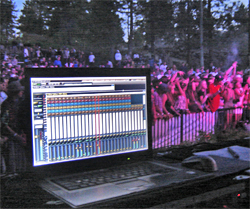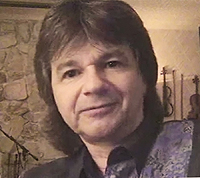Not so long ago, mixers had six channels, round knobs, and green paint. Next came a parade of large-format mixing desks, weighing hundreds of pounds.
Later, the first digital consoles appeared, also weighing hundreds of pounds. (Is there an echo in here?)
Finally, second generation digital consoles emerged as smaller, lighter, and less expensive versions of their predecessors, some with surprisingly advanced capabilities including really useful on-board effects, choice of EQ types, optional plug-ins, and much more.
Whether you love, like, or hate them, digital consoles have forever changed the way that business is conducted in pro audio.
Today a similar technology transition is taking place that’s likely to become a full-fledged revolution in the not-too-distant future. While we strongly suspect that some of the leading console companies are already working along these lines, it’s no secret that a small innovative company based in Las Vegas, called RML Labs, is leading the thrust into this new frontier, in much the same way that other companies took the leap of faith to transition from analog consoles to digital formats, some twenty years ago.
RML Labs, the creator of the Software Audio Console (SAC for short), is a software development company that has turned a Windows PC into a powerful virtual live mixing environment.
“It all started because I was tired of humping heavy consoles into venues and I decided to do something about it,” explains Bob Lentini, inventor of SAC and owner of RML Labs. “As I began working on the initial concept, I quickly realized that a host of other advantages would become even more important than simple weight reduction.”
Lentini came to this realization quite early (“bleeding edge” being close to the mark), having introduced SAC as a proof-of-concept way back in 1992 at an AES convention in New York City. Now, nearly 20 years later, SAC has proven its worth on thousands of shows mixed by a regiment of front of house and monitor engineers, who weren’t afraid to try something out of the ordinary.
“First and foremost, this new approach, centered on digital technology, would have to sound exceptional – not just good – with respect to the best analog consoles of the day,” Lentini notes. “Making great digital sound takes meticulous care in programming, and that doesn’t happen overnight. The variables are immense.”
After two decades of work, he contends, “We’ve been able to achieve sonic properties that match, or perhaps exceed, the offerings of even the largest and most well-funded companies.”
While researching this story, the author spoke with numerous users who are as passionate about SAC’s sound quality as Lentini himself. One is Steve Emler, long-time front of house mixer for Tesla. Elmer told us, “While the other aspects of SAC are useful and intriguing, if it didn’t sound as good, or better, than anything else I’ve heard, it wouldn’t fit my needs.”
That says a lot. Elmer’s comments indicate that it’s not just about convenience, as valuable as that may be, but about sonic excellence which is something that all conscientious professionals continually strive to achieve.
















